WHEN IT IS THE KITCHEN IN A REGENCY ERA HOME
When we think of a kitchen today, we think of a single room.
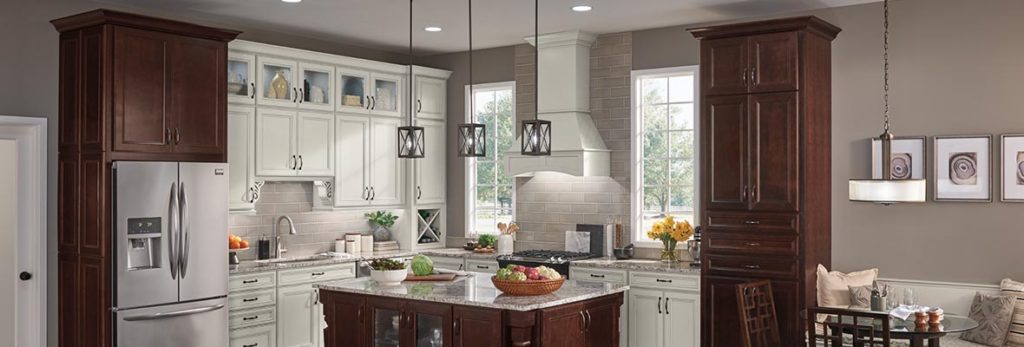 No this is not my kitchen. Too few books on the counters and not enough dirty dishes. And there’s no dog trying to get into the fridge.
No this is not my kitchen. Too few books on the counters and not enough dirty dishes. And there’s no dog trying to get into the fridge.
Historically, the words kitchen and kitchens were used interchangeably. The reason? In stately homes and even in townhouses in the wealthier areas of London, the space where food was prepared and where servants did a great deal of their work was divided into a number of rooms, a veritable village, and whilst each room had a work specific name, together they were all called the kitchens.
The kitchens in a stately home were generally located on the ground floor. However, in some homes they were actually located in a separate building with walkways or tunnels to the dining room in the main house. In town houses the kitchens consisted of fewer rooms and were located on the ground floor. A very few were actually located on a basement level and the food would be carried to the dining room and a few other public rooms on the ground floor.
The ideal kitchens were located far enough away from the family quarters to avoid the smells of cooking to offend, but close enough to allow the delivery of food whilst still hot. They were located off an entrance in order to facilitate the delivery of supplies and if possible close to the kitchen garden for easy access.
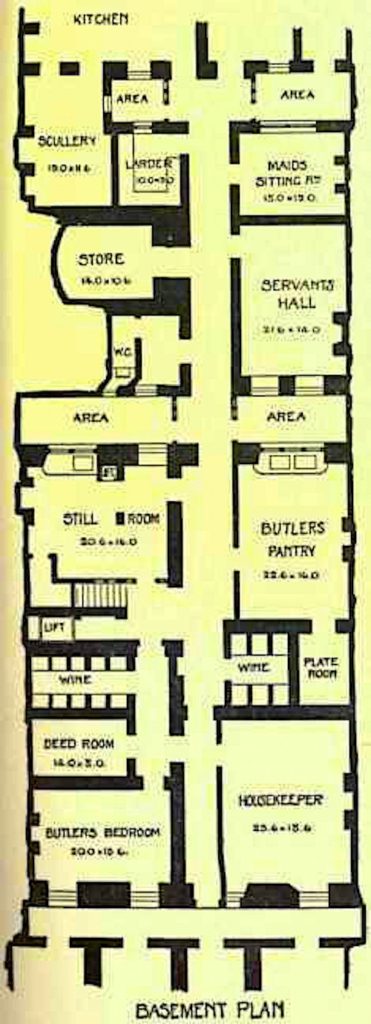

Some things were the same whether the kitchens were in a London townhouse or a country stately home. The room actually called the kitchen was basically the same no matter the location. It was the central food preparation area. From here the Cook (Yes, Cook was the title and a proper noun. You prepare an eight course dinner for a party of 100 guests at the drop of a hat and you deserve a little capitalization!) or, in some houses, the Chef ruled her or his domain. The housekeeper and the butler ruled the house. The Cook or Chef ruled the kitchen and had charge of the kitchen maids, the scullery maids, and the pot boys.
Kitchens tended to be oblong. The window would be positioned to the left side of the range, and the kitchen dresser, where essential equipment was held, would stand close to the work table.
The main components of this area were the large kitchen work table, where most of the food preparation was done, and the ovens.
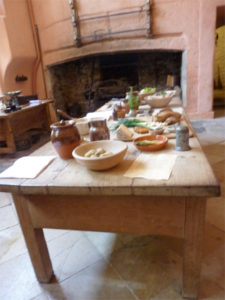
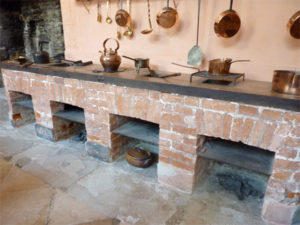
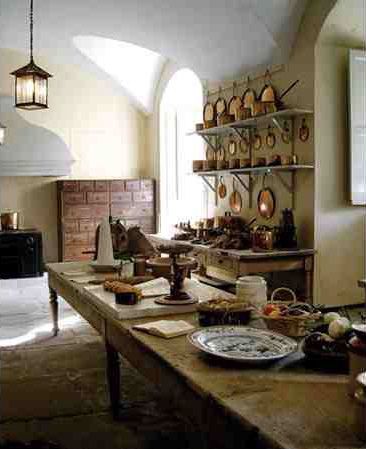

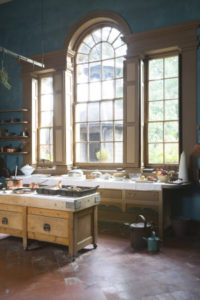
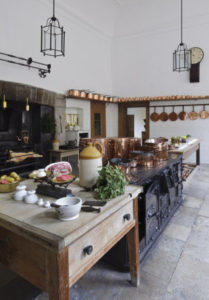
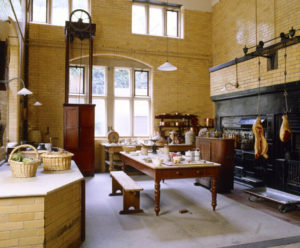
Another vital room in the kitchen village was the scullery. The proximity of the scullery to the kitchen was important. The two were located close together, in an area where both had ample natural light (to prevent mold,) but where one did not need to cross the kitchen to get to the scullery. Often the only entrance to the scullery was outside with a pass through to the kitchen. Keeping the two areas separate was vital so as not to contaminate prepared food with the soiled water. The scullery was usually located along an outside wall of the house to aid in the hauling of water and the flushing out of the drains.
Soiled water, you say? Yes! Because the scullery was primarily a wash area. Pots and pans and kitchen utensils were washed here. As was the family china, but not in the same sinks. Double stone sinks were used for most of the dishes. A copper sink was used for the china to prevent chipping. In some larger homes, with larger sculleries, there were boilers for the laundry to be boiled.
Some food preparation was done in this area, such as chopping vegetables, as they needed to be washed first. Hygiene was essential in order not to contaminate existing food. This meant constant hauling of fresh water, scrubbing, washing, and cleaning. The scullery floor, made of stone, was lower than the kitchen’s, which prevented water from flowing into the cooking areas. Dry goods were stashed well away from the scullery, which also had to be kept dry in order to prevent mold. To prevent standing in water all day long, raised latticed wood mats were placed by the sink for the scullery maid to stand upon.
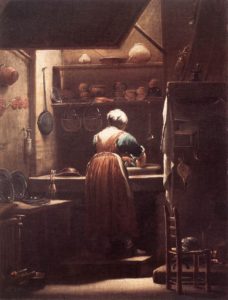

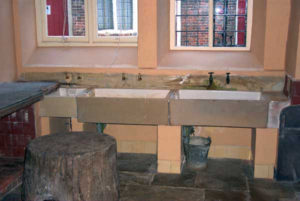
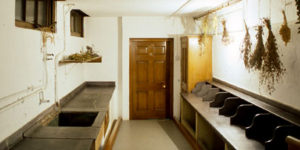
The next stop on our tour of the kitchen village is the still room. The still room started out as a combination pharmacy and distillery. Prior to the nineteenth century most medicines were herbal and every woman in the house from the mistress to the lowliest maid might have the knowledge and the talent to create them. And many homes brewed their own beers and ales. When they did, it was done in the still room. By the mid-nineteenth century some of these activities continued, but the room was used primarily to preserve and juice all of the fruit harvested on the estate. This was the room where tea trays were prepared. There was also a hearth where a kettle was always on the boil for that emergency pot of tea.

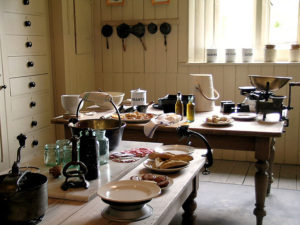
An annex to the kitchens, but still considered part of the “village,” was the butler’s pantry. The butler’s pantry was traditionally used to store silver, serving pieces, and other kitchen related items. Because the silver was kept under lock and key in the butler’s pantry the butler would sometimes actually sleep in the pantry to guard against thievery. It was also an area where meals were staged as the different removes were delivered to be taken to the dining room. The butler sometimes had a pantry-maid whose job it was to dust and keep everything in order. Sometimes a butler’s pantry might have a sink in it for quick clean ups. Polishing the silver, however, was usually a task reserved for the butler.
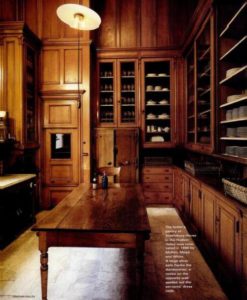
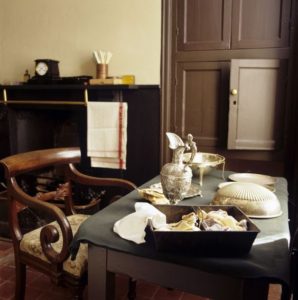

A few other rooms one might find in the “kitchen village” were :
A pastry room which is exactly what it sounds like. Some wealthier families might keep a pastry chef, as well as a chef. More likely this room was used by Cook and perhaps a kitchen maid she trained to create desserts for large events or even to create pastry dishes to be stored and used later. Cakes might be stored in this room.

A curing room used a fired clay sink lifted up on pavers and a slate tub to brine meat. The windows were kept needed to keep out flies. Yes, you really needed to know that little fact.
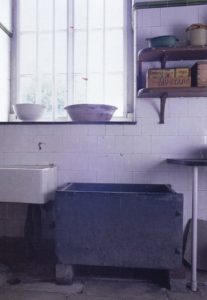
A dairy scullery was used to keep all of the utensils, molds, and cookware associated with the making of cheese, butter and other dairy products clean. The remains of these processes were tough to clean and a separate scullery was used to make certain flavors of other foods were not cooked into those used for dairy products, thus effecting the flavor of those products. It was also where dairy products might be cooked down and prepared.
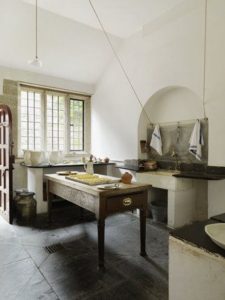
Some kitchens might be adjacent to a cool room. It would contain a wood cupboard, an early refrigerator, which afforded food storage on one side with hatch doors for blocks of ice from the underground ice house on the other. This room was also used for preparing and hanging the hams and slabs of bacon that hung behind the ventilation slats above the door, while rails were used for hanging other salted meats. Other cabinets might have a pattern of holes in them to promote air circulation around certain food items in storage.
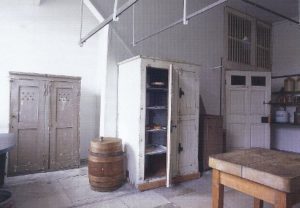
As you can see, a kitchen is not always a kitchen. And sometimes it takes a village to prepare His Grace’s dinner and see it served properly!